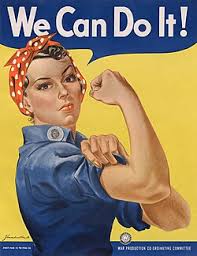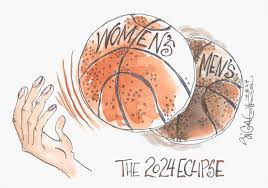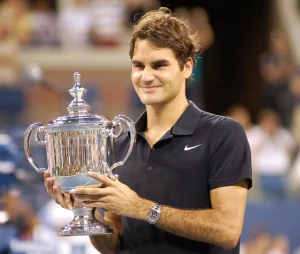1
Section One: The Fundamentals
A) What do we know about sport? What are common assumptions we make about sport and society?
|
I don’t believe that all sports promote teamwork as someone who plays lots of individual sports. Sports such as tennis are largely independent, where one has to be self-sufficient in setting their own schedules and being diligent with training with nobody else to hold them accountable. Additionally, even team sports do not always allow for teamwork. For instance, if someone has a lower skill level, they may not always get played in the last bit of them game, which can make the person feel inferior and even isolated from the rest of the team that might be better at the sport causing a rift between them. Another case of this may be seen behind the scenes as people are not necessarily treated as equals away from the game. For instance, maybe they are not included as much in team events because they are new to the team and not apart of the core group that hangs out all the time away from the sport and as a result becomes distant from the team, and decreasing the sense of unity through sport. |
Exercise 3: Notebook prompt
What are some other metanarratives about sport that you are familiar with? Find an image or video clip or draw something yourself that captures this idea…
So what? Why does any of this matter? Does it matter? As something we grow up with – live with – play through – we don’t often interrogate the meanings of sport, and perhaps we don’t want to.
But being aware of these assumptions and metanarratives is especially important, I would argue, because of the centrality of sport to our everyday lives, the role that sport plays in shaping our childhood and worldviews and….. [finish that thought]
|
|
B) What is social justice?
Exercise 4: Padlet Prompt
Think back to the last section and try to look at some of the ideas we discussed differently. How might sport and social justice actually co-exist?
Record any images, video clips, or gifs you added to the padlet and identify a point of intersection between sport and social justice (can be an issue or a barrier or a debate or something you would like to explore in more depth in this course) . Screenshot or paste in your response below.
|
Sports can shed light on a barrier to access to play sports. First and foremost, sport highlights financial barriers. There are many highly qualified athletes that are unable to play because they cannot afford it. As such, many organizations, such as jumpstart, by Canadian tire, or Tim Horton’s Camp day initiative. Through these organizations, which promote social justice are an intersection of sports and social justice. Next, many athletes, which are highly regarded socially, have many foundations and strong social influence, so because many of them are involved, people who regard them so highly are likely to follow in their footsteps and effect social change, improving socioeconomic equality within sport. |
C) Social Justice Reading
(note: this activity is optional!)
D) KINESIOLOGY AND SOCIAL JUSTICE
Exercise 5:
Social justice is a difficult concept to identify because of its:
-
potential for dilution because of multitude of definitions
-
conflation with other concerns like multicultural education, critical pedagogy, postmodernism, post colonialism, and queer theory
-
dynamic nature and meaning
-
it is a process as well as a goal
“Healthism is the idea that a person’s health is entirely their responsibility. It places a moral importance on maintaining good health” — Shaun Hui
How does mainstream discourse construct marginalized populations as “being-at-risk” for health and fitness issues?
-
It suggests they lack the capacity for self-compliance in health and physical education.
-
It suggests they lack the capacity for self-discipline.
-
It suggests they lack the capacity for self-management skills.
Fill in the missing words
Healthism constructs members of marginalized populations as , not responsible citizens, and as “problem to be ” and blamed when government-mandated programs fail to meet their .
Drag the words into the correct boxes
According to the authors of this article, by making health and fitness a matter of personal
, individual choice, and
practices, healthism
and glosses over issues of privilege,
, and social inequalities. (paraphrased)
Exercise 6:
What are the implications of bodies-at-risk discourse and the refusal to understand the health gap from a social justice perspective, according to the authors of this article?
| First, this discourse creates an ignorance among health providers in that people with a different socioeconomic status are not as healthy. This is known as deficit thinking. It refers to people thinking that people with a different background from themselves are a disadvantaged state, and that they may not be as healthy. This is not necessarily true though as people are not necessarily less healthy because they are of a different background. Understanding what this train of thinking means is important to help people move past it, and knowing this can help people start earlier. For instance, something the authors mention is beginning education on social status and equality in elementary schools, to argue against the idea of white privilege and encourage social justice. One of the ways that they are doing this is by having marginalized groups tell their stories to raise awareness of the problem from an early age and reframing the thoughts such that people do not think that marginalized groups bring the health gap on themselves by not advocating for themselves and being lazy. By addressing this in research, it could shed light on other point of views of the same story to help embrace different upbringings and contexts leading to more common ground for marginalized groups. Moreover, increasing this education will allow marginalized groups to have more of a voice and opinion on what they may need to enhance their own health and make them feel more included and more highly regarded in making personal and public health related decisions. |
Section Two: Sport Feminism
Exercise 7: Notebook Prompt
What is feminism? What does it mean to you? Choose one of the images below and explain how it captures your understanding
of feminism (or find one that does speak to you and paste this into your pressbook with an explanation of why it matters to you.

This picture shows a woman in a work uniform “saying we can do it!” This picture demonstrates women can work and is rallying others to join the fight for equal rights. This woman appears to be wearing a mechanic outfit, a job that is generally male-dominated. Feminism is an ongoing fight and always needs more people to get involved. Everyone that is able needs to get involved in it in order to give the movement more of a voice to protest against being overlooked and losing their rights, including the rights to make decisions about their own body. Feminism is a movement that fights for equal rights for women compared to men. For centuries women have been oppressed, only being able to work and vote for the last century. Professional women’s sports have only truely existed for a limited time and because of the feminism movement, they recently become very popular. For instance the WNBA became much more popular over the last year with new first round picks Caitlin Clark and Angel Reese have been amazing for the leagues publicity. Additionally, the PWHL had its inaugural season last year and has been selling out several games, and is planning to add new teams starting next year due to its success. To me, feminism is an idea that should not be required in that there should be no need for it to provide equal rights for all genders. The fact that this movement is required is very sad and should not be needed as it should be common knowledge that everyone, no matter their gender should have equal rights. An example is the pay gap, where women are paid less than men to do the same job, which is very wrong, as people doing the same job should be paid at the same rate.
|
Exercise 8: Notes Prompt (optional)
NB: Cornell notes is a great resource that teaches effective notetaking. Unfortunately, our system can’t save notes taken in the H5P app, so this is fully optional.
Exercise 9: Crossword Activity
Exercise 10: Padlet Prompt
|
Poststructuralist Feminism challenges other types of feminism. They want to decrease the meaning of the term woman and increase the diversity of femininities, masculinities, and sexualities. They do not recognize any identity from “gendered acts” and that they are cultural constructs. Regarding sports, poststructuralists aim to decrease the relations of sex and gender, but to focus on celebrating talent, regardless of the person. Poststructuralists challenge the structuralist definition of power hierarchy and choose to view power as a productive, plural force from different disciplines, such as action, subjective thoughts and knowledge.
|

|
I believe that this is not a temporary trend. People are really starting to care about women’s sports, and it is due to the increase in awareness and publicity leagues such as the WNBA are getting with the recent addition of new stars. Additionally, the PWHL consistently sells all or most of their tickets for each game, with consistently high attendance. They are adding new teams next year as well, which demonstrates how well the league is doing. I know I have seen a sharp increase in the amount of TV coverage that those leagues are seeing. The increased publicity of these leagues will also continue to improve as young girls continue to idolize these players and strive to be like them, and play in these leagues, causing the rise of more future stars, which will continue to help these leagues thrive. Finally, I also think the WTA (women’s tennis) is getting a significant increase in coverage lately. Rising stars such as Coco Guaff from the USA and Leyla Fernandez from Canada each have lots of skill and, therefore, attract a large number of people to watch their matches on TV or in person. In my opinion, this shift in media attention will not be permanent and all of these demonstrate the amount of passion for women’s sports.
|



